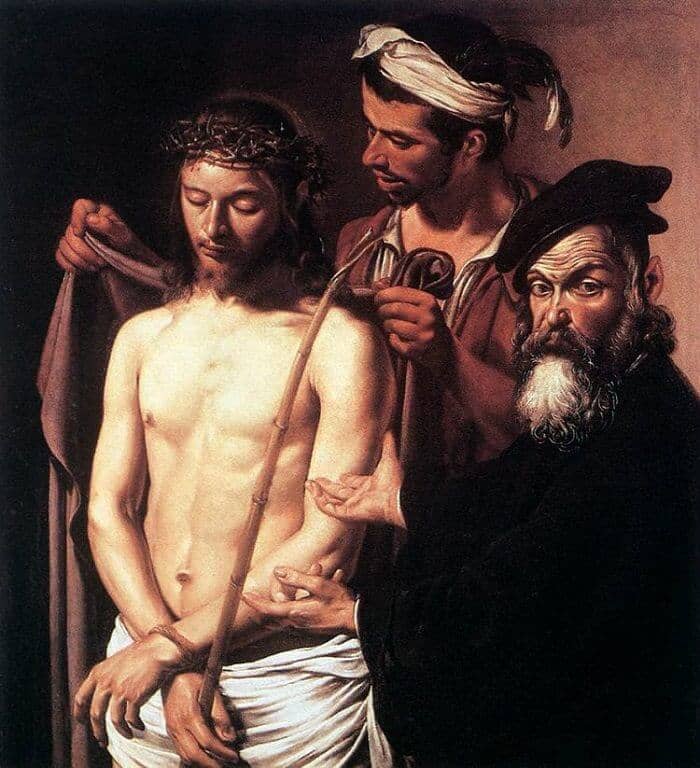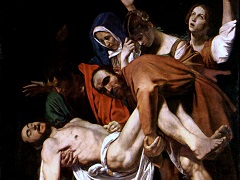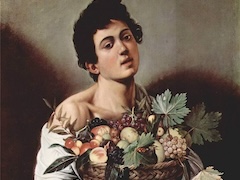Ecce Homo, 1605 by Caravaggio

This is probably a picture mentioned by Giambattista Cardi, the nephew of the Florentine painter Cigoli, who related how Cardinal Massimi commissioned versions of Ecce Homo from three different painters, Caravaggio, Cigoli and Passignano, so that he might actually end up with a work which satisfied him. He apparently did not inform any of the artists that they were taking part in an undeclared competition. Cardi also reported that Massimi liked Cigoli's painting best. The looser handling of Caravaggio's picture is typical of his late Roman period and is particularly expressive in the case of Pilate's hands, his right hand being extremely close to that of one of the foreground figures in the Madonna oj the Rosary. The unfinished appearance of the ears is also a feature which becomes more pronounced in Caravaggio's work from this time onwards. Caravaggio's interpretation of the subject is close to the story as recounted in John XIX, but he elided two separate incidents, the robing of Christ, which immediately followed the crowning with thorns, and the slightly later scene when Pilate displayed Christ to the crowd with the famous words 'Behold the Man!' The poignancy of the situation is thus heightened by the presence of the scornful and sadistic soldier - the fragile but single-minded figure of Jesus betrayed by an alliance of brute force and intellectual prevarication. The contemporaneity of the image is stressed by the standard official or academic costume worn by Pilate and by the fact that the scene is enacted on a balcony.
















